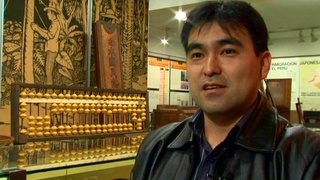Interviews
The philosophy of playing Taiko
Whether they’re playing it the right way I think is the big question for us because, for us, it’s more than an instrument, more than just music. It’s because, like I said, it’s the philosophy of playing. I think for us, it’s really more of a lifestyle. It’s a way of life that’s really being engrained in how we kind of do everything. So it’s not just coming once a week and playing on a barrel drum. It’s really gone beyond that.
We’ve always said that’s the question, “What is a Taiko player?” Or at least like to ask that question. Is a Taiko player just because you’re sitting there and you have a hachimaki on, a happi coat, and you’re play with bachi? Is that a Taiko player? Or is a Taiko player someone that’s playing in the orchestra, and they happen to have a Taiko there? Is that a Taiko player? If it’s in a jazz set, is that a Taiko player? If you’re in the middle of the Midwest playing Taiko, is that a Taiko player? Or if you’re here in San Jose, are you a Taiko player? I think it really does come down to the spirit and philosophy again and understanding where all that comes from versus not just playing just a big drum. I think that’s the challenge for Taiko in the future—being able to retain that spirit.
Date: January 26, 2005
Location: California, US
Interviewer: Art Hansen, Sojin Kim
Contributed by: Watase Media Arts Center, Japanese American National Museum








